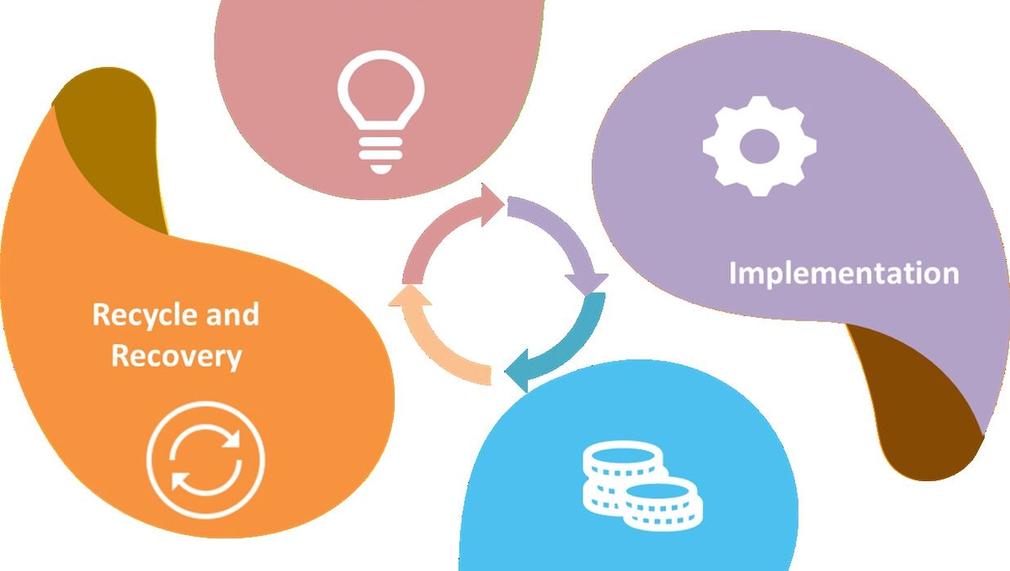LA Industry: Circular Textiles
LA Industry aims to create a centralized hub where material byproducts from businesses can be repurposed rather than going to landfills. This hub will create a local closed-loop market that promotes a circular economy by providing stable and consistent material streams for reuse. Two key success factors will be the management of an online material exchange platform and quality control/assurance.

In which areas of Los Angeles will you be directly working?
County of Los Angeles
City of Los Angeles
What is the problem that you are seeking to address?
Under Mayor Eric Garcetti, the City of LA created L.A.’s Green New Deal sustainability pLAn. The pLAn has ambitious goals of reaching zero waste by 2050. This can only be achieved by moving towards a circular economy through the implementation of different tools. As a municipality and sustainable business assistance team working directly with LA’s manufacturers and businesses, LA Industry is uniquely qualified to foster connections and build infrastructure to support this project. The design and implementation of a centralized hub and online access portal to manage exchanges and quality control of the inventory will be one of the pollution prevention and sustainability strategies used to help businesses and industries reduce costs and environmental footprints. Our clients voiced concerns about a lack of local opportunities to reuse, repurpose, or recycle material streams along with L.A.’s Green New Deal’s prestigious zero waste goals provided a perfect opportunity for this project.
Describe the project, program, or initiative that this grant will support to address the problem identified.
The hub as proposed is focused on post-industrial material streams and will create new markets, green jobs, and economic opportunities for entrepreneurs to find innovative solutions to reuse, repurpose, and recycle. This hub will be a centralized location where businesses and organizations can browse clean material streams to use as feedstock in their manufacturing processes, reducing the number of virgin materials used and thus creating cost savings. A successful hub will be an important tool to aid the City of LA in reaching 100% landfill diversion by 2050 as well as being a proven model other cities moving towards sustainability can implement.
In what stage of innovation is this project, program, or initiative?
Pilot or new project, program, or initiative
Approximately how many people will be impacted by this project, program, or initiative?
Direct Impact: 5,000
Indirect Impact: 4,000,000
Describe how Los Angeles County will be different if your work is successful.
The direct impact of this proposal is that LA County will see a reduction of waste going to landfills, the creation of new markets, green jobs, collaboration opportunities, and cost savings to local businesses, as well as uniting local organizations and NGOs passionate in sustainable fashion. The indirect impacts of this proposal will be cleaner local communities due to the reduction of waste going to landfills, a step closer for the City of LA and LA County in achieving zero waste, and fostering a social sense of responsibility amongst local businesses and consumers.
What evidence do you have that this project, program, or initiative is or will be successful, and how will you define and measure success?
Due to the immense volume of the City of LAs’ textile and garment waste, our project will target the collection and repurposing of post-industrial textile scraps. Diverting this textile waste would support L.A.’s Green New Deal’s waste goals of 100% organic waste diversion by 2028, 100% landfill diversion by 2050, and 50% local material reuse by 2035. We hope to achieve a successful, circular, and streamlined business model for textiles that can be applied to other material streams. This includes mapping out the A’s (material stream producers), B’s (intermediate processors), C’s (end users), as well as monitoring transactions to establish a dashboard of tracking metrics (ie: frequency, tonnage, composition, active users, cost savings, value creation, etc.)
Which of the CREATE metrics will you impact?
Manufacturing activity
Employment in the creative industries
Jobs per capita
Indicate any additional LA2050 goals your project will impact.
LA is the best place to LEARN